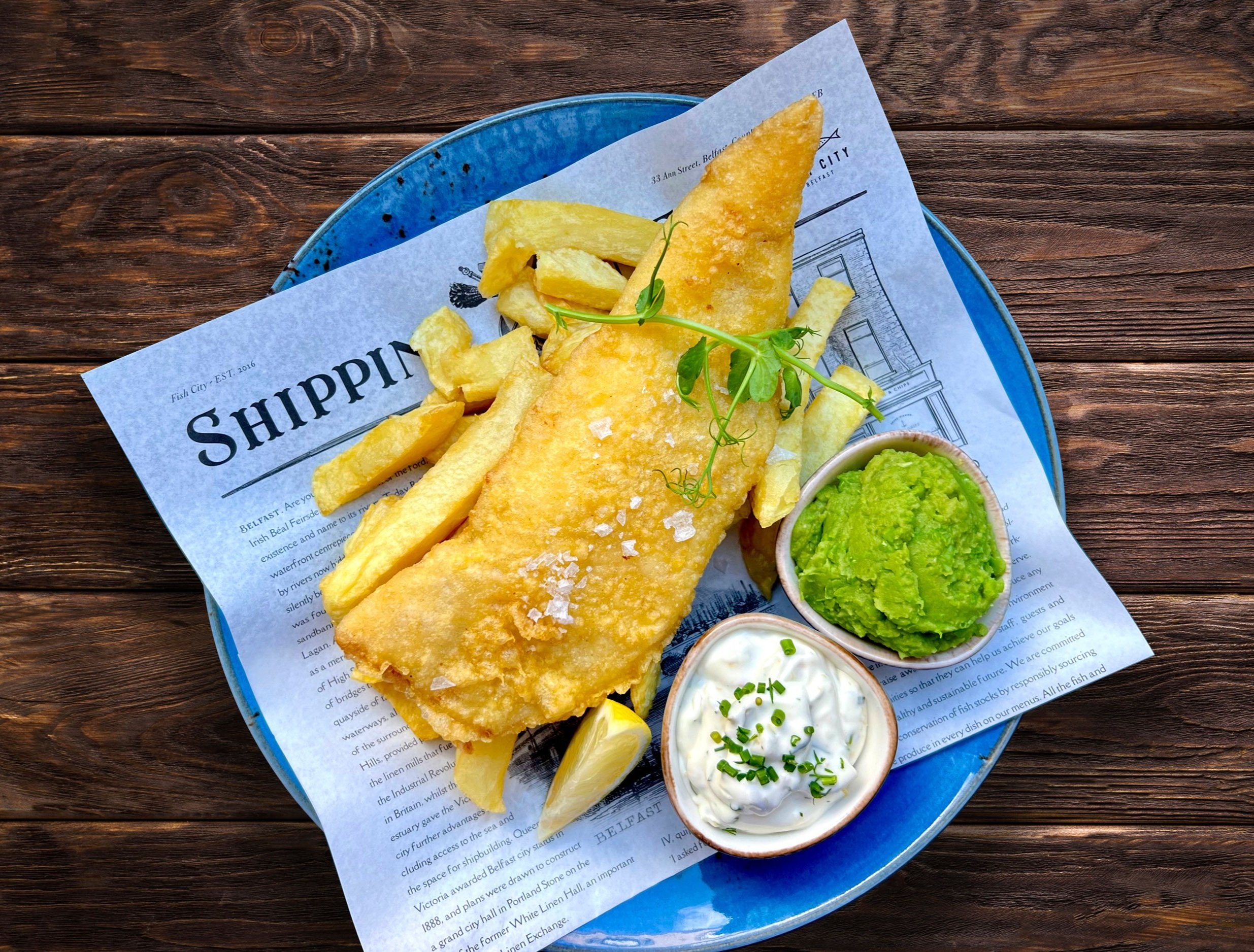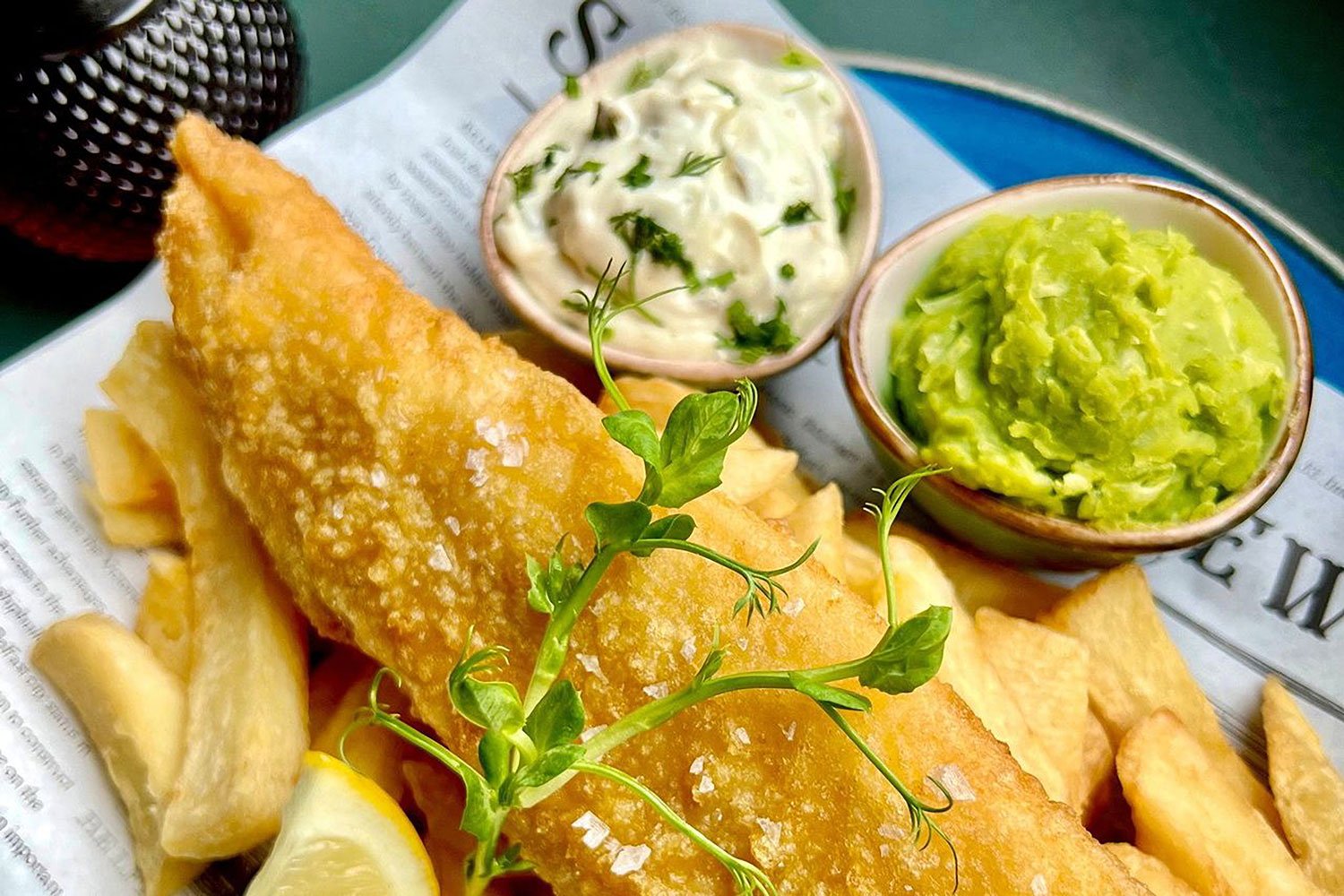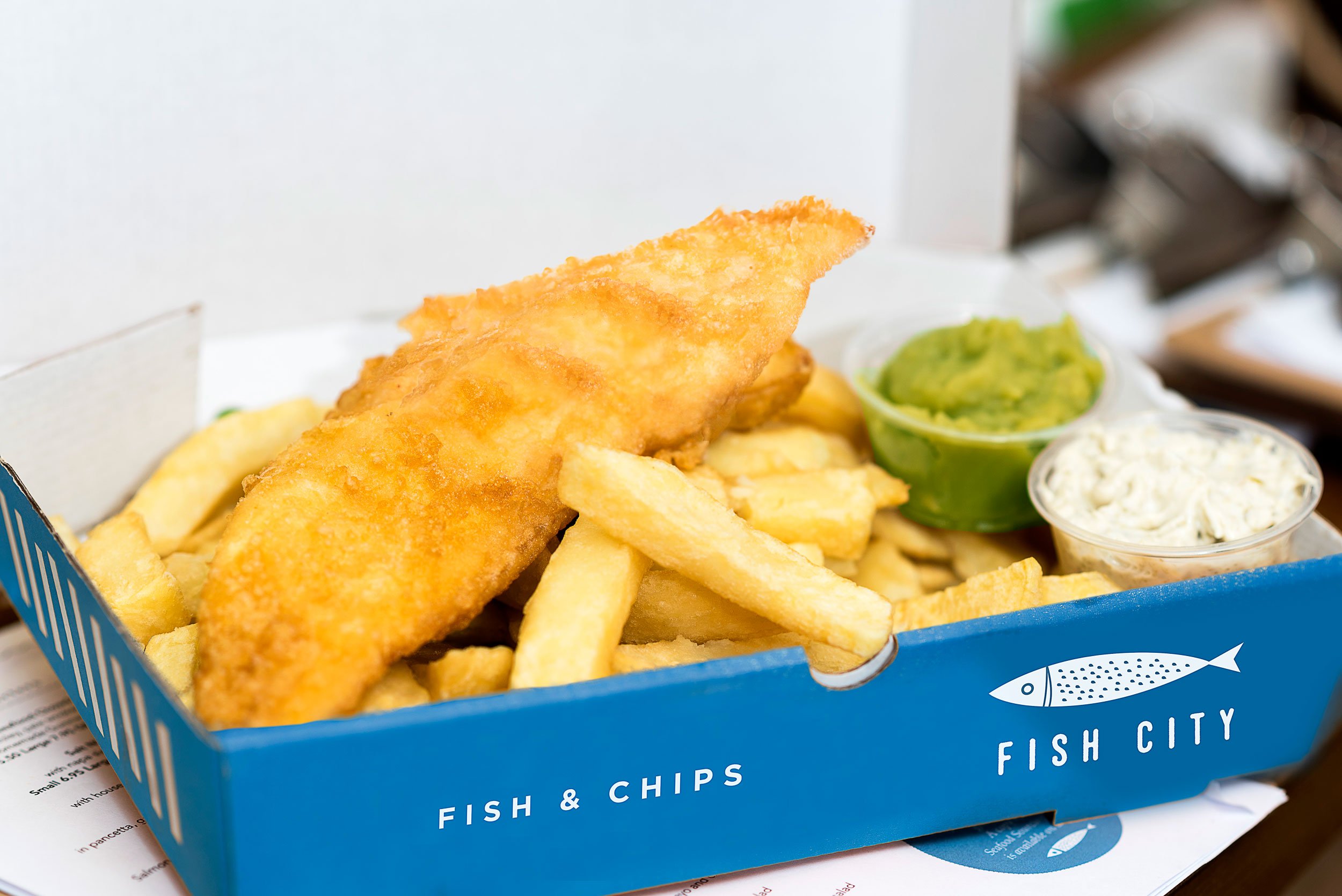The Delectable Tale of Fish and Chips: A Culinary Icon
Fish and chips – the quintessential dish that has delighted taste buds for generations. From coastal treat to national treasure, the iconic pairing of crispy battered fish and golden chipped potatoes holds a rich history that spans centuries, woven with tales of innovation, immigration, and cultural fusion.
Immigrant Roots and Cultural Fusion
Whilst the exact origins of fish and chips are debated, records suggest the iconic pairing emerged in the bustling coastal towns of England during the 19th century, with immigration playing a significant role in shaping the history of its component parts.
Jewish refugees, fleeing persecution in Spain and Portugal during the Inquisition from the 15th century, were among the earliest pioneers of fish frying in Britain. To mark shabbat– the Jewish day of rest, Sephardic families on Thursday nights or Friday mornings would prepare whitefish (plaice being a favoured fish of choice) fried in a thin coating of flour or matzo meal, which they could eat cold on Saturdays. On a diplomatic visit to London in the 1780s, then-U.S. Minister to France Thomas Jefferson was complimentary of “fried fish in the Jewish fashion.” Alex Soyer’s 1845 cookbook A Shilling Cookery for the People includes a recipe for “Fried fish, Jewish fashion”.
The expertise in frying fish meshed perfectly with the local taste for battered fish, leading to the establishment of many fish and chip shops run by Jewish families, particularly in London’s East End– with Ashkenezi immigrant Joseph Malin’s fried fish shop in Bow established in 1860. Up north in Lancashire, John Lees was selling fish and chips from a wooden hut at Mossley Market before establishing Lees’s Chip Potato Restaurant on Stamford Street in Mossley in 1863.
Chips as we know and love them are commonly attributed to Belgian frieten. Lore has it that in 1680 in Namur, a town at the time part of the Spanish Netherlands, the locals were so fond of fried fish that when the River Meuse froze over that winter, a local vendor cut potatoes into the shape of a fish and fried them in a bit of oil. The credence of this traditional tale is disputed, however, by culinary historian Pierre Leclercq, who argues that potatoes, a South American crop first brought to Spain and the British Isles at the end of the 16th century, would not have been introduced to the Namurois until the 1730s, and fats being an expensive luxury would more likely have been eaten atop bread or in soup rather than used as a frying medium.
Others believe that the humble chip’s first form was the pomme Pont-Neuf, sold by pushcart vendors on Paris’ oldest bridge, the eponymous Pont Neuf, in the late 18th century. In Charles Dickens’ 1859 novel A Tale of Two Cities, ‘husky chips of potato, fried with some reluctant drops of oil’ were referenced in scenes of Paris, where they were immensely popular. A blue plaque commemorates Tommyfield Market in Oldham as the 1860 birthplace of the British fried chip.
On the island of Ireland, the first fish and chips were sold by an Italian immigrant, Giuseppe Cervi, who mistakenly stepped off a ship bound for North America at Queenstown, now Cobh, in County Cork in 1882. From there he walked all the way to Dublin where he worked as a labourer before opening his own business selling roasted chestnuts in a handcart. He mistakenly roasted a potato and realised the Irish have a taste for a good spud. Cervi opened Ireland's first fish and chip shop on Great Brunswick Street, now Pearse Street, beside Trinity College. Cervi’s wife Palma would ask customers ‘Uno di questo, uno de quello?’ (One of this, one of that?) referring to the fish and the chips. She is credited with coining the Dublin phrase ‘One and one,’ which is used still today to describe a fish supper. Over the years, Dublin’s fish and chips have become synonymous with the Italian community.
From Working Class Staple to Beloved National Dish
The rise of fish and chips coincided with the Industrial Revolution and developments in commercial fishing. The invention of the screw propelled steam trawler by David Allen in 1877 provided as-yet unprecedented supplies of deep sea whitefish in the North Sea. New railway networks connected fishing ports such as Whitby and Grimsby to inland cities throughout the country. For the factory and mill workers in big cities and cotton and wool manufacturing towns, a fish supper was a filling and nutritious meal, made accessible and affordable by rapid industrialisation.
By 1910, there were some 25,000 fish and chip shops in the UK; and, as the industry grew, local fish frying associations cropped up around the country. In Manchester in November 1913, delegates of fish frying organisations formed the National Federation of Fish Friers Association, a national body to protect the interests of the trade. Over a century later, the National Federation of Fish Friers continues to support the industry today.
The number of fish and chip shops peaked at 35,000 in the inter-war years, and by the 1940s shops specialising in the dish could be found on almost every street in industrial towns across the country. During WWI, Belgian caterers kept allied troops in the trenches well-fed with fish and chips. Referred to by Winston Churchill as ‘good companions,’ fish and chips remained off the wartime Ministry of Food-issued ration card. Fish again was not subject to ration during WWII, Lloyd George’s war cabinet recognising the importance of fish and chips to feeding workers and families and maintaining public morale.
During World War II, many large trawlers were requisitioned into naval service, and what remained of the UK’s fishing fleet braved the added danger of submarine warfare and targeted attack by U-boats. Fish prices soared as supplies fell but were eventually controlled by the government in 1941. Paper rations meant that the dish was packaged in sheets of yesterday’s newspaper, a practise that persisted for another forty-odd years.
So ingrained was fish and chips in the national psyche that during the Allied invasion of Normandy on the 6th June 1944, the term was used by British paratroopers landing behind enemy lines as a foolproof code for identifying friend or foe. Soldiers that found themselves behind enemy lines called out ‘fish’ looking for a quick and convincing reply of ‘and chips.’ With less access to high quality fats to fry with, reportedly the wartime quality of the dish was less than optimal, but fish and chips provided a source of sustenance and comfort during times of rationing and hardship, further solidifying its place in the hearts of the people.
Fish and Chips Around the World
Fish and chip shops today dot the streets of towns and cities across the UK and Ireland, each with its own twist on the classic pairing. Whilst cod and haddock are traditional favourites, adventurous chefs have experimented with different species such as skate or rock. Similarly, variations in batter– from beer batter to gluten-free alternatives– cater to different tastes and dietary needs. Generous lashings of salt and malt vinegar are customary. And regional variations are reflected in the choice of sauces and accompaniments available, from gravy and curry sauce to mushy peas, buttered white bread, and scraps– crumbs of fried batter that are a byproduct of the cooking process.
Sustainability and environmental concerns have also come sharply into focus, with organisations across the globe working hard to protect marine environments and safeguard seafood supplies for future generations of fishing communities and seafood consumers. One such organisation is the Marine Stewardship Council (MSC), an international non-profit that recognises and rewards sustainable fishing. The MSC’s internationally recognised ecolabel and chain of custody standard ensures that certified wild fisheries maintain biologically sustainable fish stocks, that they are well-managed, and that they minimise environmental impact. MSC-certified fish and chip shops and restaurants make it easy for us to enjoy seafood whilst playing a part in protecting the future of our oceans.
Today, the fish and chip industry calendar is dominated by the National Fish and Chip Awards, held by the National Federation of Fish Friers, and one of the UK’s most celebrated awareness days– National Fish and Chip Day, led by the National Edible Oil Distributors’ Association. National Fish and Chip Day is held each year on the first Friday of June, though this year the day will be celebrated on Thursday, the 6th of June, to mark the 80th anniversary of the D-Day landings and highlight the importance of fish and chips during both World Wars.
The cultural influence of fish and chips extends far beyond the shores of the UK and Ireland. From Reykjavík to Rhode Island, Cape Town to Ho Chi Minh City, and everywhere in between, takeaways and restaurants– from the cheap and cheerful to fine dining establishments– can be found serving up this beloved dish to eager patrons.
In an ever-changing culinary landscape, fish and chips remains our greatest culinary export, standing as a testament to innovation, tradition, and the power of simple pleasures. Whether enjoyed wrapped in a paper cone on a seaside promenade or savoured in a cosy restaurant, this iconic dish continues to charm generations and spark joy with every crispy bite.
So the next time you tuck into a piping hot portion of fish and chips, take a moment to savour not just the flavours but the fascinating history and heritage that make this dish truly special. ■
References:
Beckett, J. (2022, January 26). How did fish and chips boost British morale during WWII?. War History Online. https://www.warhistoryonline.com/war-articles/fish-and-chips-british-soldier-morale.htmlCarter, G. (2023, May 1). Mossley’s claim to oldest chippy backed up by New Research. Tameside Correspondent. https://www.tamesidecorrespondent.co.uk/2023/05/01/mossleys-claim-to-oldest-chippy-backed-up-by-new-research/Donal. (2017, March 15). A postcard, Giuseppe Cervi and the story of the Dublin Chipper. Come Here To Me! Dublin Life & Culture. https://comeheretome.com/2017/03/14/a-postcard-giuseppe-cervi-and-the-story-of-the-dublin-chipper/Forces Network (2021, June 25). How fish and chips might have helped us win both World Wars. Forces Network. https://www.forces.net/heritage/history/how-fish-and-chips-might-have-helped-us-win-both-world-warsIrish Independent. (2013, May 29). Ever wonder where our “one and one” came from? Irish Independent. https://www.independent.ie/regionals/herald/ever-wonder-where-our-one-and-one-came-from/29306404.htmlKeel, T. (2019, January 27). In praise of fish and chips, the ultimate British dish – and our pick of places to try it. Country Life. https://www.countrylife.co.uk/food-drink/praise-fish-chips-ultimate-british-dish-pick-places-try-191630Lister-Fell, F. (2022, January 14). Malin’s in bow: The first fish and chip shop in the UK. Roman Road LDN. https://romanroadlondon.com/malin-fish-and-chip-shop-oldest/Monaco, E. (2022, February 25). Can Belgium claim ownership of the French Fry?. BBC News. https://www.bbc.com/travel/article/20180730-can-belgium-claim-ownership-of-the-french-fryNational Federation of Fish Friers. (n.d.). Everything You Need to Know About Fish and Chips. National Federation of Fish Friers - Fish and Chips. https://www.nfff.co.uk/pages/fish-and-chipsUniversité de Liège. (n.d.). La véritable Histoire de la Pomme de Terre Frite (1re partie). Culture, le magazine culturel de l’Université de Liège. https://culture.uliege.be/jcms/c_13056/fr/la-veritable-histoire-de-la-pomme-de-terre-frite-1re-partieRoyal Museums Greenwich. (n.d.). The History of Fish and Chips: A Timeline. Royal Museums Greenwich. https://www.rmg.co.uk/stories/topics/history-fish-chips-timelineZaino, C. (2022, February 25). Chipping away at the history of fish and Chips. BBC News. https://www.bbc.com/travel/article/20130409-chipping-away-at-the-history-of-fish-and-chips







